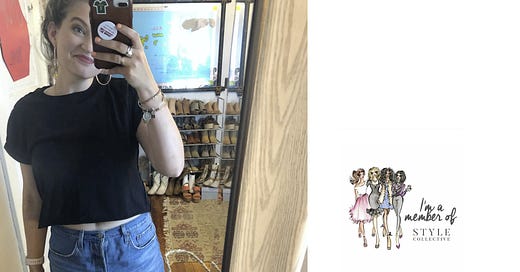Female Journalist Booted from an Execution Because her Shorts Were Too Sexy
What's wrong with this story? Nothing, besides it obviously didn't happen.
On this day, the year 1654 in Leeds, England, a public hanging was scheduled to take place. Johnathen Worcestershire had stolen a neighbor’s horse over a dispute about a haybale, at which point there was a confrontation and Worcestershire stabbed him with a fireplace bellow, leading him to bleed out. Hundreds of people showed up to the Town Square to witness the event, including several scribes sent by Charles II to document and report on the event.
Things got off to a rough start when a local townswoman named Elizabeth Montague, a troubled women who was fond of the drink, showed up to the spectacle with her head not covered in a wimple, a sign of immodesty that signified she was an untrustworthy whore. Montague was dragged away from the gallows and Worcestershire’s neck snapped as he was hanged, and the crowd left, apparently satisfied.
Actually, I made up that story, it never happened, but it could have. Just swap out a few details like the names and there is nothing out of the ordinary about it for the time period.
Last week in Atmore, Alabama, a journalist named Ivana Shatara was thrown out of a gallery where she, along with roughly thirty other people, would witness the execution of a man named Joe Nathan James. Shatara had her press credentials in hand and had witnessed several executions prior to this since she lives in Alabama, and never had a problem.
But on this day an official from the Department of Corrections approached her and told her that her clothing was inappropriate for this dignified event in which the man would be intravenously injected with nitrogen hypoxia, which causes the subject to die of asphyxia. She was told that her skirt was too short, and her opened toed shoes were too revealing. Not to be deterred, she borrowed some clothing from some co-workers and proceeded to cover the event.
She then contacted several media outlets to explain how she felt confused and demeaned by what happened. The story was then picked up by every major news publication. This truly seemed like something straight out of the year 1654.
Shatara rehashed the events to the media by the tried-and-true method of the humble brag, stating “At five-foot-seven and five-foot-ten with my heels on, I am a tall and long-legged person. I tried to pull my skirt to my hips to make the skirt longer but was told it was still not appropriate.”
Five-foot-seven is statistically marginally “tall” for a woman, if actually tall, at all. This would be like saying a boat two feet longer than the mean is a “yacht.” Of course, she was wearing heels. I am personally six-foot-four, but I am eight feet tall on stilts, which I feel the need to mention.
Much like the Worcestershire story, however, I don’t think this story actually happened. I think she did change her clothes, but I don’t think she was told to. My evidence for this is thin: First of all, she is the only source of her story, but her Instagram bio has a link to a site called SouthernStyleDiaries.com, which I’m not going to link to because it tried to install malware on my computer.
This site is affiliated with a platform called Style Collective, which functions as a sort of vanity publishing apparatus for self-identified influencers. On her page, Shatara writes embedded content about cheap clothing and beauty products she models and sells, such as “If I can be comfy AND cute, well, that is just my cup of tea. These tees are durable and well-made, and are cut perfectly. They can go with anything, and can be dressed up or dressed down.”
She sells clothes. Her story about gender discrimination—a topic currently making an awful lot of headlines— is based on clothes. Clothes she is oddly specific about in the recanting of her experience. I always follow the money, so I’m usually right.
I do think this story could have happened, and clearly enough lazy journalists find it believable enough to repeat. It being tailored to their precise tastes probably helps, also, as the narrative is a strong haul of juicy fodder: A professional woman being singled out and discriminated against. Because of her appearance. By authority. During the execution of a black man. And is it okay to wear a G-string to a legal deposition? What is the line?
Ivana Shatara-Smollett is bringing attention to so many important issues, both intentionally and not. What is wrong with Alabama, meaning why is this story even halfway plausible? Are all brand ambassadors psychos? What is wrong with social media? What is wrong with the mainstream media? And should we believe all women about everything?
Lastly, what does it make me if I’m wrong about this?








Wearing a G string in a public event? She was probably drunk and forgot what she was wearing !
It's high time, women should he let alone to live and dress up like they want to.